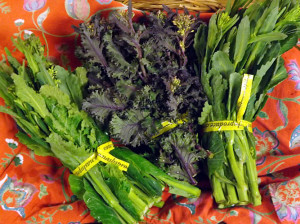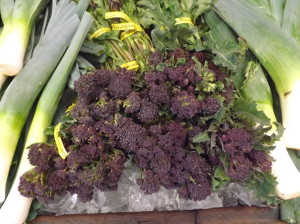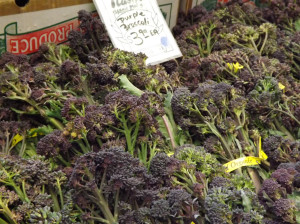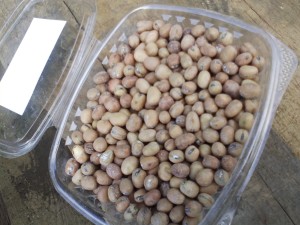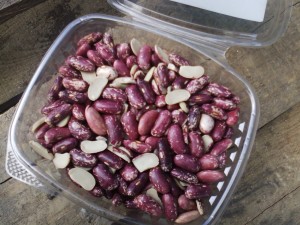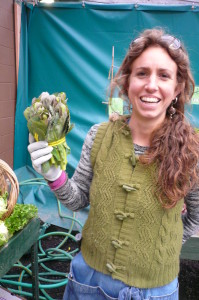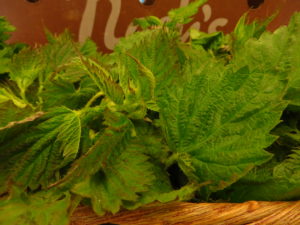
Nettles don’t sting once cooked. Magically, steaming or boiling them makes them tame — and delicious!
You will need two or three big tong-fulls of fresh nettles for this recipe. We say tong-fulls because you do not want to pick up fresh nettles, as they will sting you. Get a huge pot of water boiling and add a handful of salt.
Grab the nettles with tongs and put them into the boiling water. Stir around and boil for 1-2 minutes.
Fish them out with a skimmer or the tongs and immediately dump them into a big bowl with ice water in it. Once they are cool, put them in a colander to strain.
Get a cloth towel, like a tea towel, and put the nettles in it. Wrap one end of the towel one way, then the other end of the towel the other and squeeze out as much moisture as you can.
This makes a little more than 1/2 cup of very green, very pretty pesto. Store any unused pesto in the fridge, topped with some olive oil to keep the air out.
To Make Nettle Pesto
3 garlic cloves
2 tablespoons toasted walnuts, pecans, or other nuts
2 tablespoons grated cheese (any hard cheese will do)
6-8 tablespoons blanched, chopped nettles
Salt
Olive oil (use the good stuff)
Pesto is best made with a mortar and pestle, thus the name, which means “pound.” You can also make it in a food processor. First add the nuts and crush lightly. Roughly chop the garlic and add it processor and pulse to blend.
Add the salt, cheese and the nettles and blend together until it is all fairly uniform.
Start adding olive oil. The amount depends on how you are using your pesto. If you are making a spread, use maybe 2 tablespoons. If a pasta sauce, double that or more. Either way, add 1 tablespoon at a time, stirring to incorporate it.
Serve as a spread on bread, as an additive to a minestrone as a pasta sauce or as a dollop on fish or poultry. You can freeze it and in the fall, put it on baked delicata squash. Fantastico!
Have you tried this recipe? Tell us how it turned out!

